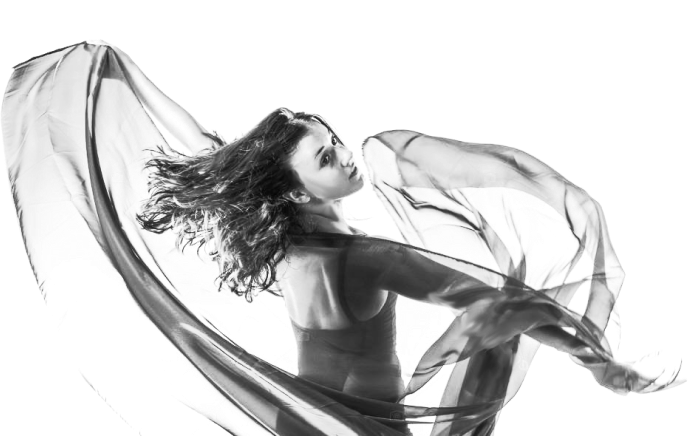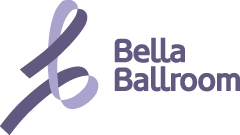
Social Dance
Hustle
The Hustle gained popularity and was developed during the “Disco era” of the 1970s. It is a fast, upbeat dance that has many similarities to the swing dancing of the 1930s and 1940s. It’s a thrilling dance that is still danced in many Ballroom dancing and social dance communities today.
History of the Hustle
Hustle dancing was born in the 1970s during the boom of the Disco era in the United States. The Hustle went thorough many evolutions and variations during the 1970s. Originally, the Hustle was known as a line dance with the same name and was danced with groups of people. The word “Hustle” also referred to the dancing of the latest solo movements that dancers would use out on the dance floor. Throughout the early 1970s, freestyle solo dancing was popular and seen all over the well-attended discotheques of the time. One history suggests that a group of young adults started developing partner dances for the Disco rhythms in the Bronx neighborhoods of New York City out of these popular solo dance moves. The youth would hold a variety of dance contests and would gather to dance together and share new information about the dance. As more people started to participate in this dance, it began to evolve, and a new partner dance was born.
Eventually “The Hustle” became the name that coined this social partner dance. Some argue that the couple’s dance stole the name “The Hustle” from the already existing line dance. When the movie “Saturday Night Fever” hit the scene in 1977 with a mixture of Latin and Swing dancing done to the new modern disco beat, no one knew what to call this upbeat dance. The dance went through many names such as “Disco Swing,” “Rope Hustle,” “Sling Hustle,” “Latin Hustle,” “Street Hustle,” and others. These sub names were used to describe the different flavors and emphasis of the dance being done until the catchall name of “The Hustle” was adopted.
Prior to the release of the film, “Saturday Night Fever,” the Hustle had many Latin influences and many called it the Spanish Hustle. Early pioneers on the Spanish Hustle forefront included dancers from the Latin Symbolics Dance Company, which was founded in the South Bronx in 1972. In the early days of the Hustle, dancers from this company including Floyd Chisolm, Dante, Jose Dominicano, Willie Estrada, Wille Rivera, Gladys Rodrguez, Eddie Ramundi, Debbie Benitez, Denise Florentino Sara Silva and Maggie Solis became known as the best of the best. It was at the Latin Symbolics Studio where part of “Saturday Night Fever” took place and was filmed. Actor John Travolta played the part of an Italian dancer from the queens named Tony Manero who was not actually a dancer, but a popular kid from the neighborhood. In the movie, Tony Manero learns how to do the original Spanish Hustle from the Latin Symbolics Dance Team in preparation for his Las Vegas dance showcase. This movie became an integral part of the Hustle’s history as the popularity of the film put the Hustle on a nationwide map and made Disco dancing super hip, even for men.
Hustle Dance Today
Today the Hustle continues to be danced and is found in social dance circles, ballroom studios, competitions, and other dance events. Hustle dancers still dance to classic Disco beats and also to more contemporary pop music. In the late seventies, punk rock emerged and there was a wave of anti-disco movement. While the hustle faded out of popular culture, it never died. Hustle fanatics of the seventies never gave up on the dance and continued to evolve the dance in the underground dance club scene through the eighties. The dancers of this former era are still passing on their knowledge to younger dancers, although the current hustle bears little resemblance to the hustle of the seventies.
Hustle is often danced today to contemporary pop music and is now danced as a fast, smooth dance, with the follower spinning almost constantly. The lead will send his partner away and draw her close. Many have fun making the Hustle a challenging dance by following a rhythmic pattern which plays with the timing of the music rather than following it verbatim. Hustle music tempos today are a little slower than the fast disco versions of the early eighties and seventies.
The Hustle is considered an Authentic Style Dance, and DanceSport, the governing body for ballroom and social dance, is one of the places where the Hustle stays alive and continues to grow. DanceSport defines the Hustle as being associated with retro disco music and perfect for “dance-beat, nightclub music including everything from pop to rap and hip hop.”
You can see interpretations of the Hustle on national televisions shows such as “So You Think You Can Dance” and “Dancing With the Stars.” The exposure of the Hustle on national television has caused new dancers to take interest in learning the dance. The foot-work is popular with beginner dancers as the basic pattern structure is simpler than other partner dances and can be attainted relatively quickly. The Hustle continues to be associated with fun times and done with highly dynamic, flashy, and powerful energy.
Hustle Dance Music
- “Do the Hustle” Van McCoy
- “More Than a Woman” Bee Gees
- “Beautiful” Akon
- “I Will Survive” Gloria Gaynor
- “Disturbia” Rihanna
- “I Cry” Flo Rida
- “Scream” Usher
- “Last Dance” Donna Summer
- “Night Fever” Bee Gees
- “Smarty Pants” First Choice
- “Romeo and Juliet” Alec Costandinos
- “Risky Changes” Bionic Boogie
- “Tonight I’m Lovin You” Enrique Iglesias
- “Take It Off” Ke$ha
- “Kill the Lights” Britney Spears
- “Gypsy Woman” Crystal Waters
- “Stayin Alive” Bee Gees
- “La Isla Bonita” Madonna
- “December 1963” Four Seasons
- “Paradise” Sade
- “The Hustle” Van McCoy
- “You Stepped Into My Life” Wayne Newton
- “Ladies Night” Kool & the Gang
- “Jive Talkin” Bee Gees
- “Ain’t No Stoppin’ Us Now” Mcfadden & Whitehead
- “Jezebel” Ricky Martin
- “I’m Every Woman” Chaka Khan
- “Do I Do” Stevie Wonder
- “Wherever Whenever” Shakira
- “More Than a Woman” Bee Gees
- “Got to be Real” Cheryl Lynn
- “Same Shame Shame” Shirley and Company
- “Lost in Music” Sister Sledge
- “Got to be Real” Cheryl Lynn
- “Never Give Up on a Good Thing” George Benson
- “I Don’t Feel Like Dancin” Scissor Sisters
- “Impaciente” Mestizzo
- “Vogue” Madonna
- “Heaven Must be Missing an Angel” Tavares
- “Impaciente” Mestizzo
- “Love 4 Fun” Enrique Iglesias
- “Don’t You Want My Love’ Carl Carlton
- “The Groove Line” Heatwave
- “Neutron Dance” Pointer Sisters
- “Someday” Sugar Ray
- “Boogie Oogie Oogie” Taste of Honey
- “Overload” Zappacosta
- “Dance Disco Heat” Sylvester
- “Strong Enough” Cher


